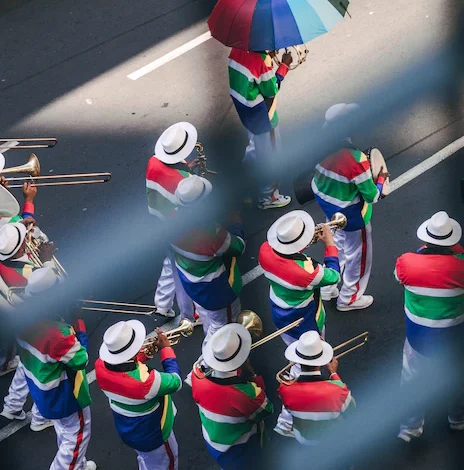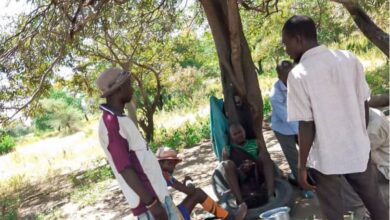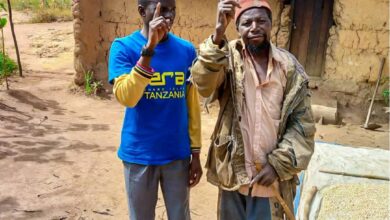History of Islam in South Africa (Part 1)

- 1652 Arrival of Malays
- 1654 Arrival of first Asiatic at the Cape
- 1658 Advent of the Mardyckers
- 1667 Arrival of political exiles [Orang Cayen]
1652 Arrival of Malays 1
J S Mayson, describing the Islamic life in the 19th century Cape Town, in The Malays of Cape Town, writes: “In 1652 a few Malays of Batavia were brought by the Dutch into the Residency, and subsequent Settlement of the Cape of Good Hope… ” It is possible that these “Malays of Batavia” were the first Muslims to come to this country.
1654 Arrival of first Asiatic at the Cape
Around 1654 the Dutch East India Company established the Cape as a halfÂway house for its ships travelling between Holland and the East Indies. It was also to serve as a penal settlement for convicts and political exiles from the East.
G M Theal, the historian, says in his book, History of South Africa before 1795, on the Dutch East India Company, “With her [the Haaselt] came the first of a class of persons afterwards numerous in South Africa and whose descendants form at the present day an important element in the population in Cape Town.”
Four “Asiatics” had been sentenced by the High Court of Justice in Batavia to banishment and hard labour for life. Their crime: preaching insurrection in Batavia against Dutch rule. Three of them were sent in the Haaselt to Mauritius and one was brought to the Cape of Good Hope.
This political prisoner was probably among the the first recorded Muslim to land on South African soil, two years after the White settlement in the country2.
1658 Advent of the Mardyckers 3
The first recorded arrival of free Muslims known as Mardyckers is in 1658. Mardycka or Maredhika implies freedom. The Mardyckers were people from Amboyna [an Indonesian island] in the southern Moluccas and were brought to the Cape in order to defend the newly established settlement against the indigenous people, and also to provide labour in the same way that they had been employed at home, first by the Portuguese and later by the Dutch, in Amboyna. Jan Van Riebeeck had requested that the Mardyckers be sent to the Cape as a labour force. The Mardyckers were prohibited from openly practising their religion: Islam. This was in accordance with the Statute of India [drafted by Van Dieman in 1642] which stated in one of its placaats [statutes]: “No one shall trouble the Amboinese about their religion or annoy them; so long as they do not practise in public or venture to propagate it amongst Christians and heathens. Offenders to be punished with death, but should there be amongst them those who had been drawn to God to become Christians, they were not to be prevented from joining Christian churches. ” The same Placaat was re-issued on August 23, 1657 by Governor John Maetsuycker probably in anticipation of the advent of the Mardyckers to the Cape of Good Hope. The Placaat governed the Cape as part of the Dutch Colonial Empire.
1667 Arrival of political exiles [Orang Cayen] 4
This year saw the arrival of more Muslim political exiles banished by the Dutch to the Cape. These political exiles or Orang Cayen were Muslim men of wealth and influence who were banished to the Cape from their homeland in the East because the Dutch feared them as a threat to their political and economic hegemony. The first political exiles were the rulers of Sumatra. They were Sheikh Abdurahman Matahe Sha and Sheikh Mahmood. Both were buried in Constantia. From the very outset the Cape authorities accommodated the exiles away from Cape Town as they feared the exiles would escape. A tomb for these political exiles has been erected on “Islam Hill” in Constantia in the Cape. Shaykh Yusuf of Macassar is the best known of the Orang Cayen.
1681 Officially Cape designated place of political exiles
From 1681 onwards the Cape of Good Hope became an official place of confinement for Eastern political prisoners of rank of the Dutch East India Company. They were sentenced for opposing Dutch rule. From 1681 Macassarian princes arrived at the Cape. They were housed in stables at the Castle of Good Hope. The role of the political exiles in the establishment of Islam has been greatly overplayed. As former heads of state in the Indonesian archipelago, they, however, exerted very little direct influence in the establishment and development of Islam at the Cape.
1694 Arrival of Shaykh Yusuf 5
Shaykh Yusuf [‘Abidin Tadia Tjoessoep] was born in 1626 of noble birth in Goa in the East Indies. He fought alongside and supported Sultan Ajung of Bantam, Goa, in his war against the Dutch. Twice Shaykh Yusuf escaped from Dutch custody in the East, but was finally persuaded in 1694 to surrender on the promise of a pardon. The Dutch did not fulfil their promise and Shaykh Yusuf was banished, along with his family and followers, to the Castle in Batavia from where he was transferred, under armed guard, to the Castle in Colombo, Ceylon [now Sri Lanka]. Fearing Shaykh Yusuf’s influence in Ceylon the Dutch exiled him to the Cape of Good Hope ten years after his initial surrender. The Shaykh arrived on board ‘De Voetboog’ on April 02, 1694 along with his retinue of 49 which included his two wives [Carecontoe and Carepane], two slave girls [Mu’minah and Na’imah], 12 children, 12 imams [religious leaders] and several friends with their families. He was royally welcomed by Governor Simon van der Stel at the Cape. They were housed on a farm in Zandvleit, near the mouth of the Eerste River in the Cape, far from Cape Town, on June 14, 1694. The Company’s attempt to isolate Shaykh Yusuf at Zandvleit did not succeed. On the contrary, Zandvleit turned out to be the rallying point for ‘fugitive’ slaves and other exiles from (he East. It was here that the first cohesive Muslim community in South Africa was established. Since many of the Shaykh’s followers hailed from Macassar, the district around Zandvleit is still known today as Macassar.
1697 Arrival of the Rajah of Tambora [Abdul Basi Sultania] 6Another political exile to be brought to the Cape was the Abdul Basi Sultania, the Rajah of Tambora. Tambora was originally part of the Majaphit Kingdom of Java. The Rajah arrived at the Cape in chains, being sentenced for actively opposing the Dutch East India Company in his native country. On his arrival at the Cape, he was housed in a stable at the Castle in Cape Town, but upon Shaykh Yusuf’s intervention, the Cape authorities moved the Rajah to Vergelegen in the district of Stellenbosch to live in isolation and away from other political exiles. Robert Shell 7maintains that the Voortrekker leader , Piet Retief, was a descendant of the Rajah of Tambora.




